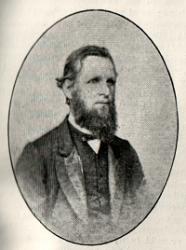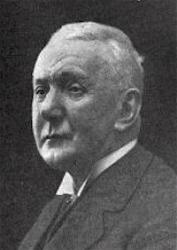Planning worship?
Check out our sister site, ZeteoSearch.org,
for 20+ additional resources related to your search.
- |
User Links
Person Results
Willard F. Jabusch
1930 - 2018 Person Name: Willard F. Jabusch, b. 1930 Scripture: Psalm 24:9-10 Author of "The King of Glory" in Journeysongs (3rd ed.) Willard F. Jabusch (b. 1930) received degrees from St. Mary of the Lake Seminary, Mundelein, Illinois, and Loyola University, Chicago. He also earned a doctorate at Northwestern University, Evanston, Illinois (1986), and studied music at the Chicago Conservatory and the University of London. A parish priest at St. James Roman Catholic Church in Chicago from 1956 to 1961, he taught at Niles College of Loyola University from 1963 to 1966 and at the Mundelein Seminary from 1968 to 1990. Since 1990 Jabusch has been director of Calvert House, the Roman Catholic student center at the University of Chicago. His theological publications include The Person in the Pulpit (1980), Walk Where Jesus Walked (1986), and The Spoken Christ (1990). He has written some forty tunes and one hundred hymn texts, often pairing them with eastern European and Israeli folk tunes.
Bert Polman
Willard F. Jabusch
Michael Joncas
b. 1951 Person Name: Michael Joncas, b. 1951 Scripture: Psalm 24:3 Author of "I Have Loved You" in Journeysongs (3rd ed.)
Michael Joncas
Norman E. Johnson
1928 - 1983 Person Name: Norman Johnson Scripture: Psalm 24:1 Harmonizer of "TERRA BEATA" in African American Heritage Hymnal
Norman E. Johnson
J. D. Jones

1827 - 1870 Person Name: J. D. Jones, 1827-1870 Scripture: Psalm 24:7-10 Composer of "GWALCHMAI" in Common Praise [Gwalchmai]
Born: 1827, Bryngrugog, Montgomeryshire, Wales.
Died: September 17, 1870, Rhuthun, Wales.
Buried: Baptist cemetery, Rhuthun, Wales.
Jones’ parents were so poor they could only give him a year’s schooling. Therefore he spent his boyhood learning all he could about music. Before he was 20 years old, he published a few psalm tunes under the title Y Perganiedydd (The Sweet Singer). From this effort he earned sufficient funds to attend college in London. He is also remembered as a singing teacher at Rhuthyn. His works include:
Y Perganiedydd, 1847
© The Cyber Hymnal™ (hymntime.com/tch)
J. D. Jones
St. John of Damascus

675 - 787 Person Name: John of Damascus (696?-754?) Scripture: Psalm 24 Author of "The Day of Resurrection" in Common Praise (1998) Eighth-century Greek poet John of Damascus (b. Damascus, c. 675; d. St. Sabas, near Jerusalem, c. 754) is especially known for his writing of six canons for the major festivals of the church year. John's father, a Christian, was an important official at the court of the Muslim caliph in Damascus. After his father's death, John assumed that position and lived in wealth and honor. At about the age of forty, however, he became dissatisfied with his life, gave away his possessions, freed his slaves, and entered the monastery of St. Sabas in the desert near Jerusalem. One of the last of the Greek fathers, John became a great theologian in the Eastern church. He defended the church's use of icons, codified the practices of Byzantine chant, and wrote about science, philosophy, and theology.
Bert Polman
========================
John of Damascus, St. The last but one of the Fathers of the Greek Church, and the greatest of her poets (Neale). He was of a good family in Damascus, and educated by the elder Cosmas in company with his foster-brother Cosmas the Melodist (q. v.). He held some office under the Caliph. He afterwards retired to the laura of St. Sabas, near Jerusalem, along with his foster-brother. There he composed his theological works and his hymns. He was ordained priest of the church of Jerusalem late in life. He lived to extreme old age, dying on the 4th December, the day on which he is commemorated in the Greek calendar, either in his 84th or 100th year (circa 780). He was called, for some unknown reason, Mansur, by his enemies. His fame as a theologian rests on his work, the first part of which consists of philosophical summaries, the second dealing with heresies, and the third giving an account of the orthodox faith. His three orations in favour of the Icons, from which he obtained the name of Chrysorrhous and The Doctor of Christian Art, are very celebrated. The arrangement of the Octoechusin accordance with the Eight Tones was his work, and it originally contained no other Canons than his. His Canons on the great Festivals are his highest achievements. In addition to his influence on the form and music, Cardinal Pitra attributes to him the doctrinal character of the later Greek hymnody. He calls him the Thomas Aquinas of the East. The great subject round which his hymns are grouped is The Incarnation, developed in the whole earthly career of the Saviour. In the legendary life of the saint the Blessed Virgin Mary is introduced as predicting this work: the hymns of John of Damascus should eclipse the Song of Moses, rival the cherubim, and range all the churches, as maidens beating their tambours, round their mother Jerusalem (Pitra, Hymn. Grecque, p. 33). The legend illustrates not only the dogmatic cast of the hymns, but the introduction of the Theotokion and Staurotheotokion, which becomes the prevalent close of the Odes from the days of St. John of Damascus: the Virgin Mother presides over all. The Canons found under the name of John Arklas (one of which is the Iambic Canon at Pentecost) are usually attributed to St. John of Damascus, and also those under the name of John the Monk. Some doubt, however, attaches to the latter, because they are founded on older rhythmical models which is not the case with those bearing the name of the Damascene, and they are not mentioned in the ancient Greek commentaries on his hymns. One of these is the Iambic Canon for Christmas.
His numerous works, both in prose and verse, were published by Le Quien, 1712; and a reprint of the same with additions by Migne, Paris, 1864. Most of his poetical writings are contained in the latter, vol. iii. pp. 817-856, containing those under the title Carmina; and vol. iii. pp. 1364-1408, the Hymni. His Canon of SS. Peter & Paul is in Hymnographie Grecque, by Cardinal Pitra, 1867. They are also found scattered throughout the Service Books of the Greek Church, and include Iambic Canons on the Birth of Christ, the Epiphany, and on Pentecost; Canons on Easter, Ascension, the Transfiguration, the Annunciation, and SS. Peter & Paul: and numerous Idiomela. In addition, Cardinal Mai found a manuscript in the Vatican and published the same in his Spicilegium Romanum, which contained six additional Canons, viz.: In St. Basilium; In St. Chrysostomum; In St. Nicolaum; In St. Petrum; In St. Georgium, and In St. Blasium. But M. Christ has urged grave objections to the ascription of these to St. John of Damascus (Anthologia Graeca Carminum Christorium, p. xlvii.). Daniel's extracts in his Thesaurus Hymnologicus, vol. iii. pp. 80, 97, extend to six pieces. Dr. Neale's translations of portions of these works are well known. [Rev. H. Leigh Bennett, M.A.]
-- John Julian, Dictionary of Hymnology (1907)
St. John of Damascus
Richard G. Jones
b. 1926 Scripture: Psalm 24:1 Author of "God of Concrete, God of Steel" in Hymns for the Living Church
Richard G. Jones
Robert Jackson

1840 - 1914 Scripture: Psalm 24:4-5 Composer of "WAVERTON" in Trinity Psalter Hymnal After receiving his musical training at the Royal Academy of Music, Robert Jackson (b, Oldham, Lancashire, England, 1840; d. Oldham, 1914) worked briefly as organist at St. Mark's Church, Grosvenor Square, in London. But he spent most of his life as organist at St. Peter's Church in Oldham (1868-1914), where his father had previously been organist for forty-eight years. A composer of hymn tunes, Jackson was also the conductor of the Oldham Music Society and Werneth Vocal Society.
Bert Polman
Robert Jackson
Charles Price Jones

1865 - 1949 Person Name: Charles P. Jones Scripture: Psalm 24:3-4 Author of "Can You Stand?" in His Fullness Songs Charles Price Jones born December 9, 1865, near Rome, Georgia. He grew up in Kingston, Georgia, and attended the Baptist church. He was converted in 1884 while living in Cat Island, Arkansas. In 1885 he was called to the ministry and began preaching. In 1888 he attended Arkansas Baptist College and taught school in Grant County, Arkansas. He preached and pastored several Baptist churches. After asking God for a deeper experience of grace and fasting and praying for three days, Jones experienced a closeness with God, and in 1895, along with other Baptist holiness adherents, who taught that a second work of grace can cleanse the Christian of original sin. They started a holiness movement in the Baptist church, and he began teaching holiness in his congregation, Mount Helm Baptist Church in Jackson, Mississippi. He faced much opposition from some members of his congregation and other Baptist churches. Eventually the church voted to remove "Baptist" and change it to "Church of Christ." For several years, Jones led a non-denominational holiness movement. In 1899 he began to write songs for his church. Most of his hymns were inspired by a scripture passage. The congregation built the Christ Temple campus which included a 1000 seat sanctuary, a printing press, a school building, and a girl's dormitory. In 1917, Jones organized Christ Temple Church in Los Angeles and moved the printing press there. He died January 19, 1949 in Los Angeles
Dianne Shapiro, from Church of Christ (Holiness) U.S.A. website and "Charles Price Jones (1865-1949) Religious Leader" by David Daniels, Mississippi Encyclopedia website (both accessed 10/9/2020)
Charles Price Jones


 My Starred Hymns
My Starred Hymns


